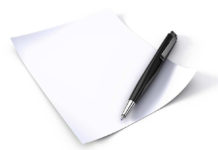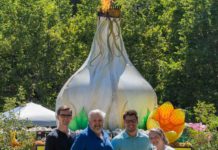It’s funny when so-called garden experts get together,
especially on tours of gardens. If you don’t know the name of a
particular flower or shrub, just ask. No sooner than the question
is out of your mouth, you’ll have several answers. If it’s a
particularly unique specimen, a debate will then follow on the
correct pronunciation of the Latin name.
It’s funny when so-called garden experts get together, especially on tours of gardens. If you don’t know the name of a particular flower or shrub, just ask. No sooner than the question is out of your mouth, you’ll have several answers. If it’s a particularly unique specimen, a debate will then follow on the correct pronunciation of the Latin name.
When I left you last week, we were in Seattle as part of the Garden Writers Association annual national symposium. Garden writers range from newspaper columnists, such as myself, to magazine writers and hosts of radio and TV garden shows.
Today is the last of a two-part series on gardens in Seattle. Seattle residents really do love their gardens. They may be the brunt of jokes about Seattle’s rain and cloud cover, but once their mild summer arrives, there’s no place in the country where gardeners would rather be except possibly the San Francisco or Monterey/Santa Cruz areas. The cool days with no humidity make it perfect to visit or work in gardens all summer.
Which brings us to this week’s column. While many of the gardens the writers visited were private, a couple were not. The Bellevue Botanical Garden boasts a perennial border that rivals anything seen in England, and the Washington Park Arboretum offers an amazing collection of trees and shrubs.
Bellevue is located just across a freeway from downtown Seattle. The 36-acre gardens are at 2001 Main St., (425) 452-2750, www.bellevuebotanical.org. As mentioned, it is known for its year-round display of perennial borders. The borders feature dramatic slopes of flowers. Bold colors unfold as one walks through the garden; deciduous trees and shrubs form a backdrop and connect the garden to the surrounding woodland.
The Alpine Rock garden contains specimens that grow in high, mountainous conditions. Tiny wildflowers, mountain hemlock and granite outcrops introduce you to the alpine world. There’s a ceanothus look-alike called Aubrieta physaria, with white, dandelion-like seed heads. The Bellevue Botanical Garden also features a loop trail, waterwise garden, Yao garden and native plants.
Whereas the Bellevue Botanical Garden is cute, the Washington Park Arboretum is massive. Its 230 acres are in east-central Seattle on the shores of Lake Washington on the campus of the University of Washington. Founded in 1934, the Arboretum has some 40,000 trees, shrubs and vines. There are more than 10,000 catalogued into collections, with 4,600 different species cultivated from around the world. Interestingly, 139 plants on the endangered species list are growing here.
Collections include rhododendron, azalea, mountain ash, pine, spruce, cedar, fir, crabapple, holly, magnolia, camellia and Japanese maple. Views from the waterfront trail at the Arboretum’s north end offers foliage beauty of mountain laurel, mock orange and dogwoods. The colorful fruits of the mountain ashes are hard to miss.
For more information on the Washington Park Arboretum, call (206) 543-8800, or visit its Web site at washingtonparkarbotetum.org.













